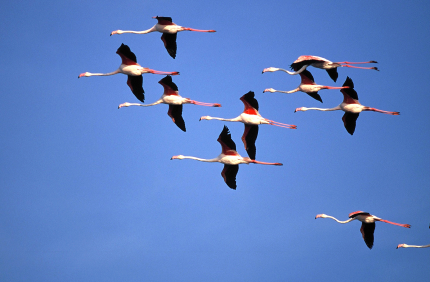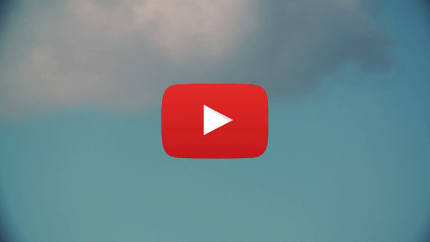Regional Park of the Po Delta
Country: Italy.
Established in: 1998.
Surface area: 53,653 hectares.
Municipalities: Comacchio, Argenta, Codigoro, Goro, Mesola, Ostellato (FE), Alfonsine, Cervia (RA), Ravenna.
Main features: Brackish wetlands, water-to-ground transition areas, very high number of resident/wintering bird species, evidence of ancient human activities of fishing and hydraulic management of the territory for the swamplands reclamation.
Discover the Park!
Park Description:
The park protects the largest complex of wetlands in Italy, and one of the most important wildlife sanctuaries in Europe as regards a multitude of nesting, migratory and wintering water birds. It is divided into six sites, straddling across the southern portion of today’s delta system - pertaining, for the remaining part to the Veneto region - and Ferrara’s inland and coasts. Although natural environments are intertwined with densely populated and cultivated areas, the ever-changing lands of the delta are still pervaded by the fascinating atmosphere of these lively waterscapes.
Along the unspoiled stretches of coast, pioneer vegetation colonises the most secluded beaches, where the oystercatcher and Kentish plover usually nest. The large brackish marshes near Ravenna, familiarly called piallasse, and the vast fresh-water basins near Ferrara (Comacchio, Bertuzzi and, farther inland, Campotto and Valle Santa) are important nesting points for the spoonbill, sandwich tern, Mediterranean gull, lesser crested tern, black-winged stilt and large egret.

Flamingos "Phoenicopterus ruber" - Photo by Fabio Liverani
The fresh-water wetland of Punta Alberete, the last seasonally flooded forest of the region, is home to rare anatidae, among which is the ferruginous duck. In the bordering Mandriole Valley is one of Italy’s largest reproduction areas for little egrets, night herons, squacco herons, purple herons and cormorants. The vast coastal pine groves, where umbrella and cluster pines - better resistant to salt - coexist, were planted in past ages; those of San Vitale, Classe and Cervia seem to date from the Roman times. Of major importance is the Gran Bosco della Mesola - the remnants of the ancient coastal forests - with its unexpected, dense wood of live oaks before the Sacca di Goro.
A population of red deer that is considered the only native one in our peninsula populates this land, traditionally a game reserve of the d’Este family. It is, in fact, to the Dukes of Ferrara and to their passion for hunting that we owe the castle of Mesola, a monument of great beauty now part of the park’s premises. The historical heritage of the delta is certainly of inestimable value; almost everywhere are hints of the complicated humans-to-nature relationship which for many centuries has contributed to shaping this ever-changing territory, also thanks to imposing hydraulic works and reclamation of the land. The fascinating lagoon village of Comacchio is among the most interesting features.

Saline Comacchio Birdwatching station - Photo by Maria Vittoria Biondi
Built in the late Roman age on thirteen islets, it has a history of exploitation of the nearby fishing basins, in particular for catching eels with ingenious methods like the lavorieri. Very renowned are the religious buildings of Sant’Apollinare in Classe - some of the highest expressions of the Byzantine art - and the Benedictine Abbey of Pomposa. Also interesting are the archaeological sites of the Etruscan settlement of Spina. Cervia was founded by the Etruscans in the middle of extensive saltpans where small amounts of salt are still obtained today for demonstration. To fully appreciate this world, suspended between water and earth, visitors can not only walk along the paths and banks or penetrate the basins and canals by boat, but also go to see the many museums and visitor centres which are scattered throughout the land to illustrate its most authentic spirit.
CEETO Pilot Action Objective:
The pilot aims to implement the tourism governance model in the Po Delta Regional Park (since 2015 UNESCO MAB Reserve) representing a uniquely rich environment typical of Emilia-Romagna low, sandy coast (dunes,coastal pine forests, freshwater wetlands, salt pans). It covers some of the most productiv areas (fishing/saltworks/tourism) and some of the richest in biodiversity, counting the broades extension of protected wetlands in Italy. It's a tourism hotspot where sustainability is a priority.
Regional Park of the Po Delta - CEETO Pilot Area video-presentation:
This video portrays the main natural features and tourism challenges that the Regional Park Po Delta, Italy, is facing. With CEETO project, the Park will test and implement a system to tackle the existing challenges.

